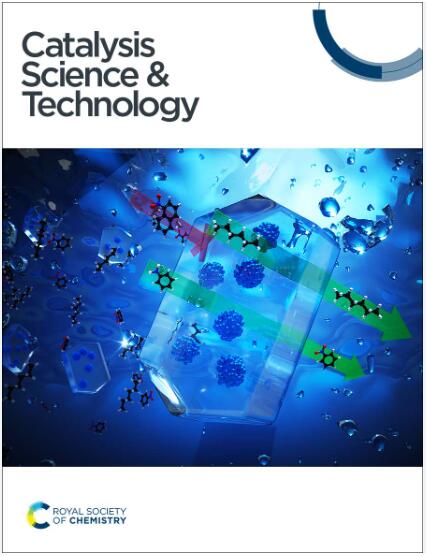Tailoring the glucose oxidation activity of anodized copper thin films†
IF 4.4
3区 化学
Q2 CHEMISTRY, PHYSICAL
引用次数: 0
Abstract
Glucose oxidation is a fundamental reaction in biosensing and energy conversion, and anodized copper electrodes have emerged as promising catalysts for its enhancement. This paper systematically investigates the link between anodization parameters and glucose oxidation on thin copper films, unraveling crucial insights into their optimization. By careful control of the anodization parameters, distinct species can be favoured, such as Cu2O, Cu(OH)2, and CuO, with varying catalytic activities. Applying a polarization in 1 M KOH at 0 V (vs. Ag|AgCl) results in the formation of a highly active surface CuO layer, which delivers significant performance improvements compared to the bare copper electrode. Namely, a 55% sensitivity gain in the 0.1–0.5 mM range, and a remarkable 73% gain in the 0.75–2 mM range. Furthermore, the manufactured electrodes display an extremely low limit of detection – only 0.004 mM. Such an exceptional result can be ascribed to the scalable and reproducible manufacturing done directly on cleanroom-compatible platforms. These insights not only clarify the effect of thin copper film anodization on glucose oxidation, but also chart a practical path towards improving the real-world efficiency of copper-based integrated systems for biosensing and energy conversion.
调整阳极氧化铜薄膜的葡萄糖氧化活性†
葡萄糖氧化是生物传感和能量转化的基本反应,而阳极铜电极是促进葡萄糖氧化的重要催化剂。本文系统地研究了阳极氧化参数与薄铜膜上葡萄糖氧化之间的联系,揭示了对其优化的关键见解。通过仔细控制阳极氧化参数,可以得到具有不同催化活性的不同物质,如Cu2O、Cu(OH)2和CuO。在1 M KOH中施加0 V的极化(相对于Ag|AgCl),可以形成一个高活性的表面CuO层,与裸铜电极相比,它提供了显著的性能改进。也就是说,在0.1-0.5 mM范围内灵敏度增益为55%,在0.75-2 mM范围内灵敏度增益为73%。此外,制造的电极显示极低的检测极限-仅为0.004 mM。这样一个特殊的结果可归因于可扩展和可重复的制造直接在洁净室兼容的平台上完成。这些见解不仅阐明了薄铜膜阳极氧化对葡萄糖氧化的影响,而且为提高生物传感和能量转换铜基集成系统的实际效率指明了一条可行的道路。
本文章由计算机程序翻译,如有差异,请以英文原文为准。
求助全文
约1分钟内获得全文
求助全文
来源期刊

Catalysis Science & Technology
CHEMISTRY, PHYSICAL-
CiteScore
8.70
自引率
6.00%
发文量
587
审稿时长
1.5 months
期刊介绍:
A multidisciplinary journal focusing on cutting edge research across all fundamental science and technological aspects of catalysis.
Editor-in-chief: Bert Weckhuysen
Impact factor: 5.0
Time to first decision (peer reviewed only): 31 days
 求助内容:
求助内容: 应助结果提醒方式:
应助结果提醒方式:


